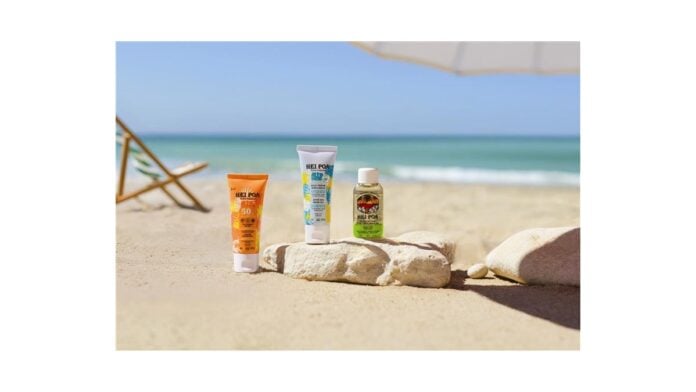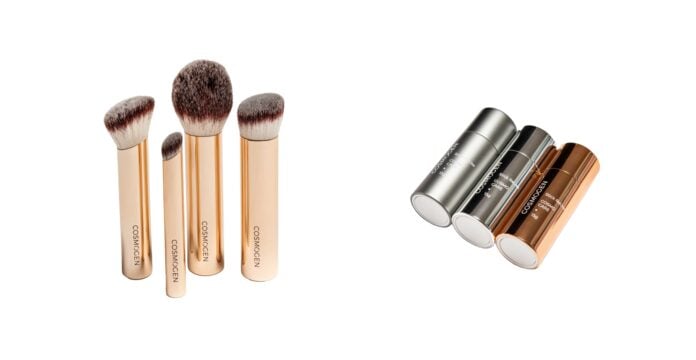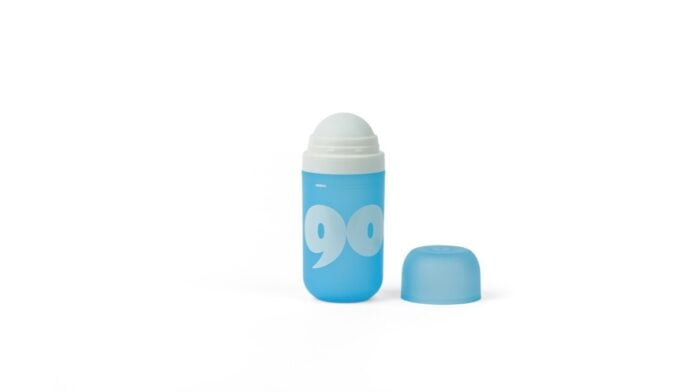Far from being superficial products, cosmetics are essential products that contribute in many ways to a person's overall well-being. Understanding their mechanisms of action and formulation and measuring their benefits are the fruits of today's science for tomorrow. This is reflected in the 68 oral presentations and 900 posters that have just been evaluated and selected from nearly 1,200 submissions for the IFSCC 2025 Congress. Coming from 55 different and varied affiliations, the 68 oral presentations offer maximum visibility to a wide range of research teams. 14 countries are represented. 10% of the podium places go to the Americas, 40% to Asia and 50% to Europe and Africa. 3 countries stand out, reflecting their significant research activity in the field of cosmetics and the richness of their ecosystem: France, China and South Korea. Isabelle Castiel-Higounenc, Vice President and Chair of Science of the IFSCC 2025 Congress, discusses the high number of applications and the reasons behind it, as well as the highlights and discoveries that make the 2025 edition so unique.
The IFSCC Congress 2025 has attracted an unprecedented number of submissions for oral presentations and posters. What do you think is the reason for this?
Isabelle Castiel-Higounenc: Since its inception in Munich in 1960, the IFSCC Congress has become the international meeting place for all experts involved in cosmetic research. Until 2022, a congress and a smaller symposium were held simultaneously every two years. The increase in the number of participants has led to the decision to organise a large annual congress from 2023 onwards. In 2025, we expect record attendance, which I attribute to three main factors:
A post-COVID recovery. The COVID period led to a proliferation of digital events. However, the various stakeholders are happy to return to in-person events, which are much more conducive to exchanges in general and in our world of research in particular. This partly explains the increase in the number of participants over the last three years.
The appeal of the location, and not just because of the French Riviera. France is renowned for the richness of its industrial and scientific ecosystem in the cosmetics sector, its second largest economic sector. It also ranked first in scientific research at the previous congress*. This is therefore a unique opportunity for participants, half of whom come from Asia, to explore this ecosystem further and consider potential collaborations.
Perceived quality and originality. The scientific committee paid particular attention to developing the scientific programme for the congress, communicating widely about its intention to explore new avenues for inventing the future of cosmetics through science. We identified and invited speakers recognised for their expertise in their field and their communication skills. We also decided to design the programme in such a way as to encourage participants to step outside their comfort zone and provide them with new keys to innovation, in particular through cross fertilization with scientific fields other than cosmetology. This is the aim of the 'Out of the Box' sessions organised in the morning and the round table with experts in space research. This is a subject that is particularly close to my heart. For the past three years, I have been collaborating with another conference on health and space, with the aim of bringing these two scientific ecosystems closer together so that they can collaborate more and enrich each other to innovate in their respective fields. Space conditions offer an environment that is particularly conducive to certain types of procedures that must be carried out in microgravity. They also allow us to study certain clinical disorders that develop at an accelerated rate in space, such as skin ageing.
(1) Countries are awarded points based on the number of their members and the extent and quality of their participation in the congress of the year, in this case referring to the year 2024.
What does this conference mean for candidates?
Isabelle Castiel-Higounenc: This is the ideal place if you want to share your results and technological innovations with your community, but also stay at the forefront of scientific advances and explore new avenues. Scientific quality and rigour were essential selection criteria for the abstracts presented. The scientific committee was very selective, rejecting around 14% of abstracts. The fact that your abstract has been selected for presentation as a poster or podium presentation is therefore already a guarantee of quality.
Beyond recognition, the conference offers them visibility, as the IFSCC Awards Committee will present three awards based on the work selected by the conference's Scientific Committee: Best Poster, Best Oral Presentation in Applied Research and Best Oral Presentation in Fundamental Research. We will also announce the top 10 for each of the three themes addressed during the conference. The selected authors, research teams or companies will then be able to share this recognition of the excellence of their work or technologies in order to foster new scientific collaborations or support the launch of new products incorporating the award-winning results or technologies.
The presentations were selected anonymously by the scientific committee. What are the advantages and challenges of such an approach in ensuring scientific excellence and fairness within the conference?
Isabelle Castiel-Higounenc: Anonymity is naturally an advantage, but it also presents a real challenge. We had to ensure that there were no conflicts of interest, in other words, that reviewers did not evaluate any abstracts or full papers from their own affiliation. The expertise of the reviewers was also assessed and recorded on the platform, while allowing each reviewer to decline if they did not feel competent on a subject. As all abstracts were in English, none of the reviewers could be influenced in their evaluation by the country of origin or even the reputation of the author or research team that submitted the abstract, as all this data was anonymised. This evaluation work was carried out by four Scientific Group Leaders, each overseeing the review of nearly 300 abstracts by approximately 25 reviewers.
Due to my affiliation and professional ethics, I wished to remain impartial and not participate in the evaluation process. As Chair of Science, my role was to manage and ensure the smooth running of this process, which involved nearly 95 reviewers from 72 different affiliations, representing an equal number of cosmetics companies, suppliers, independents, CROs and academics from France and elsewhere. The diversity of these profiles and affiliations, the validation of their respective expertise, the blind evaluation process free from bias, and the supervision and final arbitration by four different Scientific Group Leaders ensure, for authors and participants alike, the smooth running and rigour of the selection process and the very high quality of the selected abstracts. This was our ambition.
The three main themes this year are Skin and hair health and well-being, Holistic sciences, Diversity and personalization. How do these themes fit together?
Isabel Castiel-Higounenc: We have ensured that the programme reflects the vision of the congress, namely science at the heart of the future of cosmetics. 'The Future is Science'
On the first day, we will look at new trends in research direction. First, we will explore skin and hair health. On this subject, while the line between medicines and cosmetics is clearly defined, in terms of approach, the way in which skin health is addressed reveals areas of overlap in terms of research. Cosmetics address not only beauty issues but also well-being and, in some cases, health. One example is photoprotection: sunscreen products, which are a public health issue. As a reminder, 90% of skin cancers are directly linked to sun exposure, and 1.5 million new cases appear each year. Similarly, 80% of the signs of ageing are directly attributable to sun exposure.
Secondly, through the lens of cognitive science and neuroscience, we will try to understand what influences consumers' product choices beyond simple biological effectiveness, i.e. what selection criteria they use. These new sciences should also enable us to better understand sensoriality, what the application of a product generates in terms of sensations and emotions, and how this contributes to overall satisfaction in terms of effectiveness, beauty and consumer well-being.
On the second day, we wanted to address two specific topics from the perspective of a new holistic approach to cosmetics. The first was the microbiome, because we no longer consider the skin or hair to be a single organ, but rather a tissue within a global ecosystem that interacts with our human cells. Secondly, longevity is taking precedence over anti-ageing. In cosmetics, longevity does not mean prolonging life expectancy. It means living as long as possible in beauty and good health. This is the difference between lifespan and healthspan. To keep skin beautiful and healthy for longer, we now know that a holistic approach is necessary. This involves combining several targets - prevention, regeneration and activation - and simultaneously treating structural, cellular and tissue dysfunctions, while taking into account the influence of other tissues such as blood vessels, nerves and muscles.
On the third day, we will look at how cosmetics are adapting to the diversity of consumers worldwide, taking into account their different skin and hair types and routines. At the same time, we will see how new beauty technologies are supporting this diversity approach, enabling increasingly tailored and personalised products to be offered.
What are the key points worth sharing?
Isabelle Castiel-Higounenc: When reading the abstracts submitted by participants, we see that all areas of cosmetics are represented: from make-up, perfumes and hair care to beauty tech, exposome, microbiome, longevity and anti-ageing. Anti-ageing and longevity remain the most important topics, followed by photoprotection, neuroscience and the microbiome. We are seeing a rise in research focusing on neuroscience, cognitive science, sensoriality and emotions.
Sustainability, which was still a new topic just a few years ago, is now a cross-cutting issue that applies to all areas of research. It is becoming essential for innovation in cosmetics today. This is a very positive development. Just as with product safety, optimising sustainability in the development and production of cosmetics has become a prerequisite, and all players in the cosmetics industry, each at their own level, are contributing to advancing research in this area.
The conference aims to bring together more than a thousand people and is inviting academic, scientific and industrial experts to take part. What are the most promising discoveries or presentations you expect to make at the congress?
Isabelle Castiel-Higounenc: With its highly cross-disciplinary theme, this congress highlights a wide range of topics. However, this year's event will focus on the growing integration of AI in cosmetic research, new discoveries in understanding the effects of ageing, studies on the relationships between different tissues, the skin, the nervous and vascular systems, the development of new evaluation methods and in vitro skin study models, numerous new ingredients derived from green science and biotechnology, and increasing research into understanding sensations and emotions.
How could they have a real impact on the future of cosmetology?
Isabelle Castiel-Higounenc: These discoveries will provide a better understanding of consumers and their needs, but will also enable us to identify new targets, create innovative approaches and develop more effective technologies to better address classic cosmetic issues such as photoprotection, hair quality and skin ageing. They will contribute to offering increasingly personalised solutions, while optimising the ecological impact of cosmetic products through more environmentally friendly products. Finally, they will go beyond the notion of 'beauty' performance to embrace a concept of overall health and well-being.
back to summary
Isabelle Castiel-Higounenc, PharmD, PhD
Vice-President & Chair of Science at IFSCC Congress 2025
Vice-President IFSCC
Innovation Valorization Director
Communications & Engagement, L'Oréal Research & Innovation, France
Passionate about scientific research and communication, Isabelle Castiel-Higounenc is convinced of the essentiality of cosmetics and their importance for the beauty and health of our skin, hair and our quality of life. Isabelle joined the L'Oréal Group over 27 years ago, with the aim of putting her skills at the service of innovation in cosmetics. Driven by scientific research and the sharing of knowledge, she now contributes to bringing the Group's scientific expertise to as many people as possible.
Researcher by training, Isabelle is a pharmacist with a Ph.D in dermo-pharmacology. She joined the L'Oréal Group in 1997 as Laboratory Manager, where she carried out research into skin homeostasis. She went on to become Scientific Director for a variety of projects. She first led a research project on menopause, in collaboration with Université de Laval in Quebec. She then devoted several years to oral cosmetics, with Innéov, where she directed upstream research in collaboration with Nestlé. At the same time, Isabelle turned her attention to dermatological care with Galderma, where she coordinated scientific exchanges with L'Oréal. She joined the R&I Communications Department in 2014. Her years in Research teams drove to the release of 28 scientific publications and many patents.
Today, as Director of Innovation Valorization at L'Oréal, she promotes the Group's scientific expertise and its ambitions in terms of innovation. Her objective: scientific advocacy, to gain recognition for the excellence of L'Oréal's research and innovations from a wide variety of audiences, including experts, the media and the public. Drawing on her dual expertise in research and communications, she supports researchers and brands in developing communications strategies around major innovations or new scientific territories.
As an active member of the IFSCC (International federation of societies of cosmetic chemists) on behalf of the SFC (Société Française de Cosmétologie) since 2022, she has been appointed IFSCC vice-president for the year 2024-2025. She is currently co- organizing the 35th IFSCC congress 2025, as Vice President and Chair of Science.
back to summary
IFSCC 2025 scientific committee
The scientific committee for the IFSCC 2025 congress brings together experts from various academic and industrial backgrounds. It is headed by Isabelle Castiel-Higounenc, PharmD, PhD, vice-president and Chair of Science of the IFSCC congress 2025, Marc Pissavini, Vice-Chair of Science and scientific group leader, and Professor Marc G.J. Feuilloley, Dr Nicolas Forraz and Christophe Paillet, PhD, all three also scientific group leaders. The role of the scientific committee was to work with the IFSCC Congress 2025 President, Christine Lafforgue, to establish the scientific programme in line with the Congress vision and to evaluate the approximately 1,200 abstracts received with professionalism and impartiality. The process was anonymised and supported by a rigorously configured platform with limited access based on user profiles to avoid any risk of collusion. The four scientific group leaders each supervised around 25 reviewers, and each group evaluated around 300 abstracts. They are currently preparing to evaluate the full papers, which will be scored out of 30 points. The evaluation will then be completed by the awards committee, which will award an additional mark out of 15 during the oral presentations at the conference. The anonymity of the authors and their affiliations will be lifted at the end of July, once the evaluation of the full papers has been completed.
Marc Pissavini
Vice-Chair of Science -Scientific Group Leader
Marc Pissavini is a renowned scientist with extensive experience in the field of photoprotection and method development. In 2024, he became a visiting professor at the Department of Chemistry Education at the Faculty of Sciences of the University of Montpellier. As the head of Coty Sun Research laboratory, he is responsible for leading photoprotection research and developing advanced methods to evaluate the effectiveness of sunscreen products. He is an associate editor of the International Journal of Cosmetic Science. He has served as Chairman of the working group on sunscreen methodology for Cosmetics Europe since 2012. He is also currently the Chairman of the working group 7 of ISO TC217 - Sunscreen Testing Methods.
Prof. Marc G.J. Feuilloley
Scientific Group Leader
Marc Feuilloley is Professor at the University of Rouen Normandy. He was Director of the Laboratory of Microbiology Signals and Microenvironment (LMSM EA4312) for 12 years and is now head of the team "Communication in the Human Microbiota" of UR4312 CBSA and Director the Centre of Expertise Cosmetomics@URN. He is the author of 256 articles in international peer-reviewed journals (H-index: 50).
Dr Nicolas Forraz
Scientific Group Leader
Dr Nicolas Forraz is Chief Executive officer of CTIBiotech. He has extensive expertise stem cells, regenerative medicine and 3D Tissue and with Professor Colin McGuckin was part of the team who created the world's first artificial hepatic-like liver tissue and neural cells from human umbilical cord blood. Dr Forraz has spear-headed the 43 million Euro consortium generation of the IMODI Cancer project, the largest cancer research project of France. He served between 2019 and 2022 as the President of Cosmet'in Lyon Skin Science.
Christophe Paillet, PhD
Scientific Group Leader
Christophe Paillet is a Chemical Engineer in Organic Chemistry & Ph.D. in Organometallic Chemistry (University Lyon I, France), Post doc in Homogenous catalysis. He is the Director of the Cosmetic Ingredients Department at Exsymol.
back to summary
"Out of the box" morning sessions
The 'out of the box' morning sessions by Paul Matt, Gilles Bœuf and Luc Julia, have been designed to inspire unconventional thinking and explore the unexpected as a source of creativity for cosmetology.
J1 - Sept. 16 - Paul J. Matts, PhD FRSA FRSC
The humble moisturizer, the essentiality of cosmetic technology
As an industry, it is my perception that we are all too often unnecessarily apologetic for our technology, where even we seem to believe phrases such as "hope in a jar". I for one have never embraced such notions and remain a passionate believer in the essentiality of cosmetic technology and efficacy. Skin has two critical functions, firstly as an entropy-regulator, an interface with an inherently hostile universe and, secondly, as a powerful organ of non-verbal communication... where skin speaks long before the mouth. The true function of biology is most often revealed in challenge / stress scenarios, and this is especially true of skin. In this presentation, therefore, I will discuss the challenges to skin health in resource-poor settings and use case-studies from my direct experience in Ethiopia and Tanzania to bring to life the profound essentiality of cosmetic essentiality... dispelling the myth of the "humble moisturiser".
J2 - Sept 17. - Prof. Gilles Bœuf, Paris Sorbonne University (Arago Laboratory, Banyuls-sur-Mer), AgroParisTech
The Ocean's Secret Language: Nature's Blueprint for Discovery
This presentation explores the ocean's vast, unique, and threatened biodiversity, emphasizing its interconnectedness, stability, and salinity. We will highlight the ocean's crucial role in climate regulation and discuss the concerning impacts of rapid changes driven by human activities. The importance of biodiversity in protecting against zoonotic diseases will be underscored, alongside the concept of One Health - the interconnectedness of human, animal, and ecosystem health. We will then explore how the study of marine organisms, especially those thriving in extreme environments, can inspire innovations in medicine, cosmetics, and other fields, drawing on specific examples of molecules and organisms with valuable properties. Finally, we will emphasize the urgent need to protect the ocean for both its own sake and humanity's future. This involves focusing on sustainable resource management, pollution control, and mitigating the effects of climate change. We will explore how biomimicry - innovation inspired by nature - can be a powerful tool in addressing these challenges.
J23- Sept 18. - Dr. Luc Julia, Chief Scientific Officer, Renault
There is no such thing as Artificial Intelligence
Despite a chaotic history and its existence since the 1950s, "Artificial Intelligence" made a huge comeback in the last decade. But as it stands, this "Artificial Intelligence" brings its share of unrealistic promises worthy of Hollywood films, allowing some charlatans to suggest machines could one day seize power and subjugate humanity. This hyperbole risks jeopardizing research in the field, threatening advancements in disciplines like machine learning and deep learning, which are still nascent and hold immense potential for benefiting humanity.
back to summary
Round Table
Sept 17 - 5PM - Round Table
Shooting for the Stars: Space Research as a catalyst for cosmetic discovery
The Future is Science...But Could It Be Written in the Stars?
Is the next frontier of cosmetic innovation waiting beyond Earth's atmosphere? Join us for a groundbreaking roundtable exploring the untapped potential of space research for the future of beauty. Discover the exciting ecosystem of space agencies, orbiting laboratories, and unique opportunities for conducting experiments in the extreme environment of microgravity.
There are so many shared challenges and synergies between space and cosmetic research, including: Ageing, sustainability, safety, digital innovation, advanced visualization technologies like hyperspectral imaging, and even formulation assistance, where understanding ingredient interactions can lead to entirely new approaches to cosmetic product development.
Uncover how microgravity and other space-based conditions can reveal novel insights and accelerate breakthroughs in cosmetic science. Dare to imagine the unimaginable: What if the future of your research, and the key to truly revolutionary innovations, lies not in the lab, but in space itself? This is not just science; it's the cosmic potential waiting to be harnessed.
back to summary
Keynote Speakers
6 speakersProf. Thierry Passeron, Prof. David Sander, Prof. Marc-André Selosse, Prof. Jin Qu, Prof. Nina Jablonski and Dr Anke Hadasch will each introduce one of the scientific half-days of the congress, following the 'out of the box' morning sessions
The Impact of UV on the Skin & the Future of Photoprotection
Prof. Thierry Passeron, MD, Ph.D
Head and Chair of the department of Dermatology in the University hospital of Nice, Head of the INSERM U1065 team 12, C3M laboratory, Nice, France.
Our knowledge of the damage induced on the skin by exposure to the sun, whether UVB, UVA or visible light, is constantly consolidating. We know more and more about the damage directly induced at cellular and clinical level, depending on the wavelength of exposure. Despite this, there are many preconceived ideas, resulting in inappropriate behavior towards the sun and inadequate skin protection. In this presentation, we will review the clinical impacts of sun exposure according to the type of radiation, the importance of a tailored photoprotection adapted to the skin type, geographical location and potential dermatoses. With regard to the points for improvement concerning suncare products, we'll focus on the importance of developing suncare products adapted to each individual and each skin type, as well as the need to improve the information provided to users on the exact protection offered to them. Finally, we'll look at the photoprotection of the future, discussing the optimal filtration to be provided according to the skin disorders we want to prevent, and the different ingredients or approaches that can be combined with filters to improve skin protection against solar radiation and preserve its health and integrity.
The neuroscience of emotion
Prof. David Sander, Ph.D
Vice-Dean, University of Geneva, Swizerland
Emotions are complex and fascinating affective processes that have been studied since antiquity as psychological, physiological, and social phenomena. In recent decades, new methodological tools and theoretical approaches to emotions have fueled the emergence of affective sciences and the rise of affectivism. At the core of this advancement is the domain of affective neuroscience, which has significantly deepened our understanding of the nature and functions of emotion. This progress is closely tied to the challenge of conceptualizing and measuring emotions. In this IFSCC presentation, I will introduce a general model of emotion and explore the neuroscience of emotion, including recent debates and future perspectives. I will propose a multi-componential definition of emotion: a particular event is first appraised by the individual based on their current concerns, values, and goals (or, more broadly, their motivational processes). This appraisal can then elicit an emotional response across multiple components, including autonomic physiology, action tendencies, expression, and subjective feelings. These processes, in turn, modulate cognitive functions such as attention, memory, learning, and decision-making. The interactions among these mechanisms involve complex neural networks-ranging from small to large scale-that constitute the emotional brain.
Skin microbiota: our natural beauty cream?
Pr. Marc-André Selosse, Ph.D
Institut de Systématique, Evolution, Biodiversité (ISYEB), Muséum national d'Histoire naturelle, CNRS, Sorbonne Université, EPHE, Université des Antilles, Professor at Gdansk University (Poland) and Kunming University (China), Member of the French Academy of Agriculture and the Institut Universitaire de France, Paris, France
We see ourselves and our societies so autonomous and distant from Nature that we miss... what we are, and our links to other living beings. We see microbes as negative encounters, and miss them as permanent supports and helpers of our lives. The raising awareness of microbiota challenges a bit this, but we are still reluctant to understand how exactly we depend on them to achieve a healthy life. And we mostly focus on the intestinal microbiota, a quite powerful player of our development and physiology indeed. Yet, we remains poorly aware and active on an abundant microbiota we more easily see, smell and touch-the one we can the most harm of sustain: the skin microbiota.
Largely devoted to protective functions, our skin microbiota is a natural fur which we do not protect enough. Excessive washing, with detergents, bactericides (e.g. virucide gels) and extreme physical disturbance (e.g. peeling) harm it. Application of products containing emulsifiers, antioxidants and bacteriostatic compounds also have negative effects. After examining why we became so dependent on this tinny microbial layer (our skin biofilms) in evolutionary terms, we will explore pathways to make ours skin alive again.
Programming and reprogramming of aging
Prof. Jing Qu, Ph.D
Chinese Academy of Sciences, Institute of Zoology, Beijing, CHINA
In response to a variety of stress factors, certain cells in our organs undergo a transition into a state of senescence, contributing to the accumulation of such cells in different organs as part of the aging process. These senescent cells play a role in the structural and functional decline of organs and are associated with degenerativediseases. Targeting these cells is a critical aspect of the broader strategy to combataging and help to rejuvenate. However, the heterogeneity of senescent cells and their ambiguous characteristics in vivo pose challenges, exacerbated by the lack of efficient methods for their detection and targeted intervention within the body. Dr. Jing Qu is committed to investigating both the driving causes and in vivo impacts of senescent cells. Her research interest is to uncover novel biomarkers and develop intervention strategies to manage cellular senescence and the degeneration in organ structure and functionality.
The Diversity of Human Skin in all its Evolutionary Glory
Pr. Nina Jablonski, Ph.D
Atherton Professor, Evan Pugh University Professor of Anthropology, Emerita, The Pennsylvania State University, USA
Everything about human skin - from its basic structure and function, to its color and aging characteristics - is the product of evolution. In this lecture, we will explore the spectacular story of the evolution of human skin. This overview will examine the latest evidence on the evolution of the skin's barrier functions, sweating abilities, intrinsic color and tanning properties, and the effects of environmental pollution on skin function and aging. We will discuss how skin specialists of all kinds can deal with the challenges presented by human ongoing genetic admixture and urbanization, and how we can overcome the many problems caused by legacies of colonialism and racism in medicine and skin care. We will see that by understanding the evolution and recent history of skin, we can better appreciate all aspects of this remarkable organ and understand how to treat every individual human more effectively.
The World of Color and Inclusivity
Dr. Anke Hadasch, Ph.D
Global Vice President Color Science Métier, L'Oréal R&I, France
Imagine a world where every color of beauty is inclusive and powered by best-in-class color science. Join us to discover the unique holistic approach by connecting art, science, and technology to create the best performing and most desirable colors for everyone.
We'll provide an overview of the worldwide multicultural beauty studies on face, lips and hair enabling the color creation that is inclusive by design. Unveiling disruptive and sustainable pigment technologies that deliver unprecedented vibrancy on all skin tones. Delve into cognitive color studies revealing the emotions of lip colors and learn how this research is augmenting lip color formulation and personalization. Gain insights into a data driven approach to develop predictive formulation algorithms and digital tools. Join this session and shape the future of beauty powered by color science.
back to summary




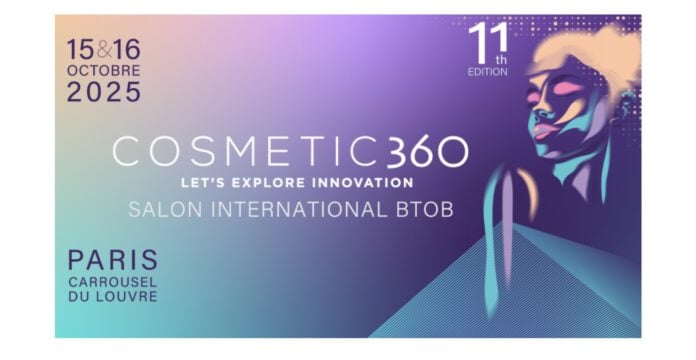



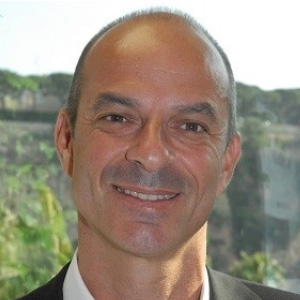
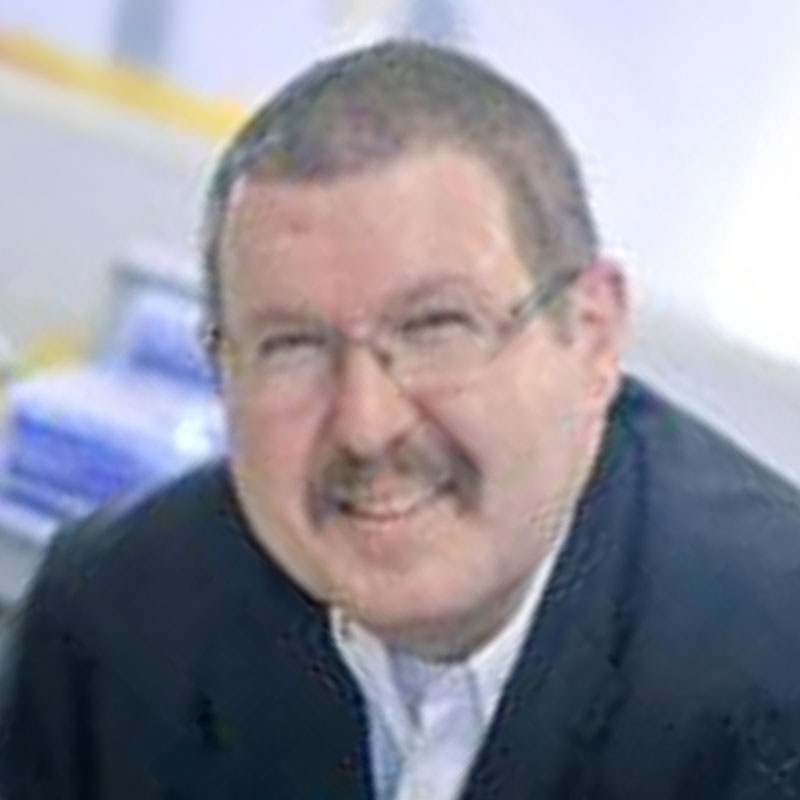


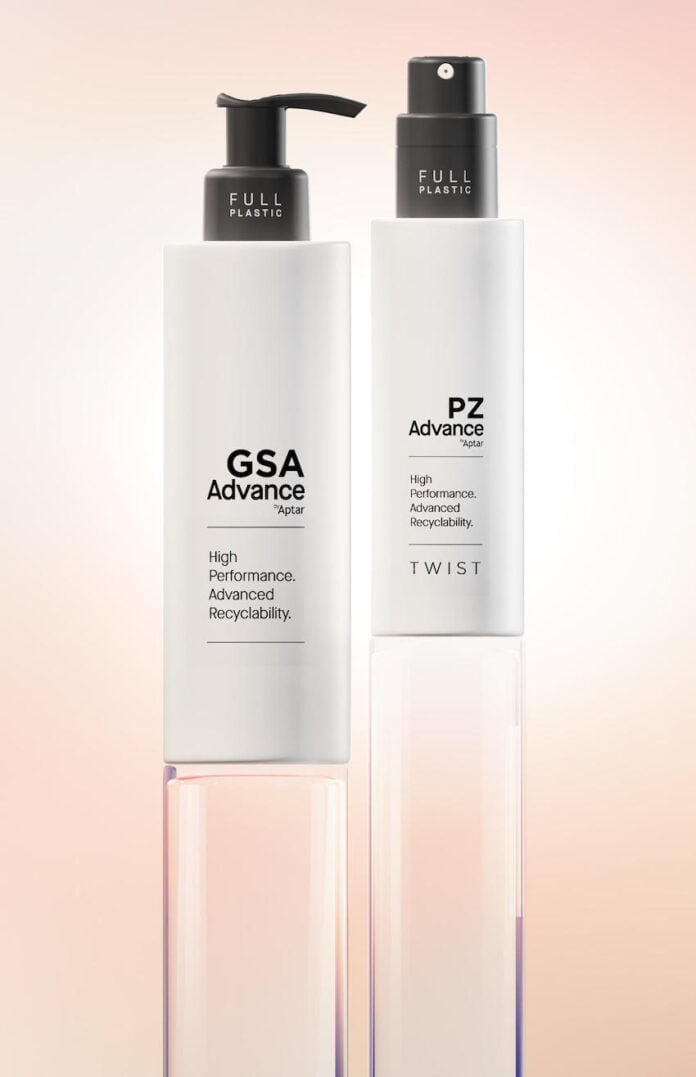
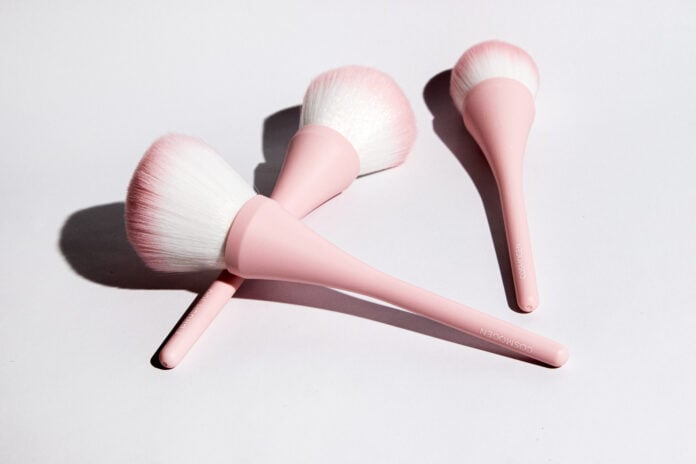
![[ZOOM IC46 - web complement] 3 questions to Maud Lelièvre 6 site-industries-cosmetiques A woman with straight, light brown hair and clear eyes smiles at the camera. She's wearing a white floral blouse, while the slightly blurred background adds a soft touch of auto-draught to the image.](https://www.industries-cosmetiques.fr/wp-content/uploads/2025/06/COSMOGEN-Maud-Lelievre-Communication-Marketing-Manager-694x1024.jpg)
